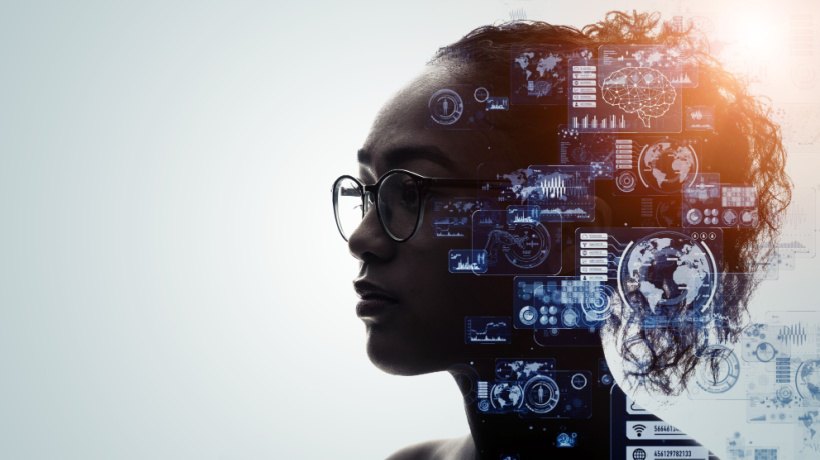How AI Has Changed eLearning Material
Once upon a time, online learning meant downloading PDFs and watching long recorded lectures. And we all know that it wasn't exactly engaging. Thankfully, things have changed since then, and eLearning content has become more interesting in lots of ways. Technology has a lot to do with that, and in recent years, Artificial Intelligence has had a very strong presence in the creation of eLearning content. Specifically, generative AI has completely changed eLearning as we know it. This isn't just about automating design and creation or facilitating research. AI can now create entire learning modules, generate quizzes in seconds, and even personalize content to match a student's strengths and weaknesses.
Teachers, students, and Instructional Designers are all seeing the results. For educators, AI can help with content creation, saving them time, while students get a more interactive and personalized learning experience. For Instructional Designers, AI offers new, dynamic ways of delivering content. But how did we get here? And how does AI-generated eLearning content differ from traditional materials?
The Evolution Of eLearning Material
Static And Generic Content
In its first days, eLearning was simple. Courses consisted of basic text PDFs, pre-recorded video lectures, and presentations. While these formats made learning more accessible back then, they weren't interactive. Therefore, the only option for students was passive learning, meaning they absorbed information without much engagement or feedback. Assessments were also limited. A traditional eLearning course usually offered a generic quiz with the same questions to every student, regardless of their progress. While this approach was effective, because there were no other options, improvement was much needed.
Interactive Content
As technology improved, so did eLearning platforms. Quizzes, discussion forums, and video-based content became more common, making courses more engaging. Adaptive learning platforms became popular as well, offering a more personalized experience by adjusting difficulty levels based on student performance. However, even with these improvements, content creation was still time-consuming. Educators had to manually design courses, update materials, and adjust content based on student feedback.
AI-Generated Content
So, AI stepped in. Generative AI automates content creation, no matter the purpose of the course. Whether you need to create guides as additional learning resources or a quiz that adapts to student responses, AI has your back. Instructional Designers and educators no longer have to spend weeks crafting materials; they can do it on the spot.
6 Differences Between AI-Generated Content And Old-School eLearning Content
1. Personalization
Wouldn't it be great if teachers could tailor every lesson to each student's needs, focusing on the topics they struggle with while skipping what they already know? That's exactly what AI-generated content does in eLearning. Unlike traditional courses, which follow a specific curriculum for every student, AI adapts in real time, creating a personalized learning experience. With traditional eLearning, students often go through the same lessons, quizzes, and videos, whether they understand the material or not. This can either be boring for some or overwhelming for others. AI, though, analyzes how students interact with the content, whether they find some topics easy or stay longer with others, and can adjust the material accordingly.
For example, if a student struggles with algebra, AI might provide extra explanations, interactive exercises, or even suggest a different teaching method, like showing a video instead of text. On the other hand, if someone quickly understands a topic, AI can take them to more complex material. This also benefits educators, as it offers them AI-driven insights on progress, so they don't have to manually check it for each of their students.
2. Speed
One of the biggest assets AI brings to eLearning is speed. Traditional eLearning materials take time, such as weeks or even months, to create. This is because educators and Instructional Designers have to research, write, design, and review course content. And if something needs updating, they have to do it all over again. However, AI can do that in just a few seconds. From generating content and creating quizzes based on lessons to summarizing topics and creating guides, just write a related prompt, and AI will generate it for you on the spot.
This speed helps not only teachers and course designers but also students. Instead of waiting for updated materials or struggling with old and outdated content, they have access to fresh, relevant information all the time. How? Well, AI tools can always find the latest research, ensuring that courses stay up to date without much effort. Of course, AI-generated eLearning content still needs to be reviewed by humans to ensure accuracy. But compared to the time it saves them, this isn't much of a hassle for educators and Instructional Designers, who now have more time to focus on more important tasks.
3. Interactivity
When eLearning first started, a lot of online courses were just scanned textbooks made into PDFs and presentations, which only brought boredom. But AI-generated content has changed that, making learning more interactive, dynamic, and even fun. One of the biggest changes is AI-powered simulations. Instead of just reading about a concept, students can experience it in action—for instance, medical students can practice surgery in a virtual operating room. These interactive experiences allow students to learn by doing, making concepts easier to understand and retain.
Another interactive part of AI is chatbots. They are available 24/7 and answer student questions immediately. Some even adapt their responses based on a student's progress. Lastly, gamification. AI can turn lessons into challenges by adding rewards, leaderboards, and personalized quizzes. This keeps students motivated and makes learning feel more like a game. You've probably heard of a popular language-learning app, Duolingo, that uses AI to track progress and adjust exercises dynamically. Well, that's gamification in practice.
4. Context
We talked about how traditional eLearning content doesn't change based on a student's progress or the context of their learning journey. On the other hand, AI-generated eLearning content can be adjusted based on a student's progress. Unfortunately, sometimes that's the only context AI is doing good at. Specifically, it misses important information because it relies solely on patterns and data.
For example, a student may have completed a lesson on history but struggle with a specific concept, like ancient Egypt. AI may recommend a follow-up lesson on the next topic even though they still haven't fully understood everything. So, AI doesn't always understand everything about individual learning experiences or external factors like personal struggles or distractions. For now, it's not quite as good at recognizing when a student might need a little extra help with one specific part of a lesson, even if the overall progress looks good.
5. Personality
When it comes to eLearning, one of the key differences between AI-generated content and traditional materials lies in personality. Human-created content brings a personal touch, which AI can't replicate. Teachers, instructors, or course designers add their own personalities, experiences, and empathy to the content they create. Whether it's a warm welcome at the start of a lesson or a joke, this human element makes learners feel connected and engaged. Not to mention that it makes the learning process more relatable.
Conversely, AI-generated content, though efficient, doesn't have that. Sure, AI can analyze data and generate content fast, but it lacks the ability to show warmth, humor, or a sense of care. AI doesn't know what it's like to experience the struggles of a student or sense their mood, whereas teachers have several ways to help, like using words of encouragement or personal stories. AI uses just facts and extra resources. That said, its role in eLearning is beneficial, but it will not replace the personal connections that come from humans.
6. Cost
Cost is an important difference between AI-generated content and traditional eLearning materials. Traditional eLearning requires a lot of time and effort to create. For example, creating videos, quizzes, and interactive elements can take weeks or even months. This usually involves hiring specialists, like graphic designers, content creators, and Instructional Designers, which is even more expensive. On the flip side, AI-generated content reduces both the time and resources needed. How? Well, AI tools can generate all kinds of eLearning materials and even simulations within minutes, and the software does most of the work. This allows instructors and Instructional Designers to just refine the content rather than create it themselves.
AI also reduces staff costs. Instead of hiring multiple people to handle different stages of course creation, the software allows you to do more with fewer resources. For instance, an AI tool can automatically generate personalized learning paths for each student, so there's no need for multiple tutors. The same applies when you need to design content for hundreds or even thousands of people; AI can do the work without you having to outsource.
Conclusion
AI-generated content in eLearning is here to stay, and it will get more advanced as this technology evolves. Therefore, the sooner you start exploring and leveraging it, the better you can understand and incorporate it. Still, while AI brings incredible benefits, it's important to recognize some potential challenges as well, such as biases, inaccurate content, or ethical issues. AI isn't here to replace educators but to enhance the learning experience. So, don't hesitate to use it as the helpful tool it is.









